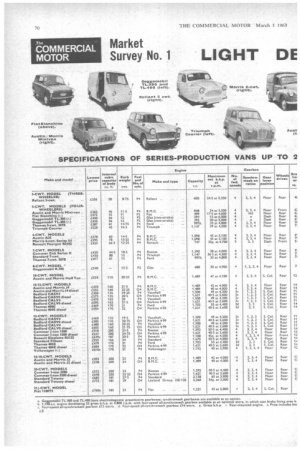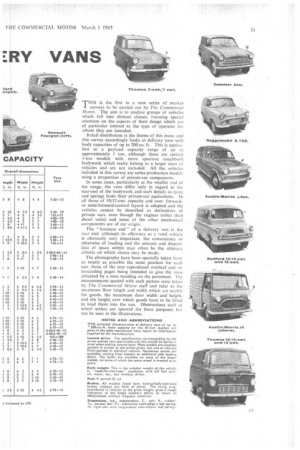LIGHT DE :WY VANS
Page 72

Page 73

If you've noticed an error in this article please click here to report it so we can fix it.
THIS is the first in a new series of market survey's to be carried out by The Commercial Motor. The aim is to analyse groups of vehicles which fall into distinct classes, focusing special attentionon the aspects of their design which are of particular interest to the type of operator for whom they are intended.
Retail distribution is the theme of this issue, and this survey accordingly looks at delivery vans with body capacities of up to 200 cu. ft:This is equivalent to a payload capacity range of up to approximately I ton, although there are certain I-ton models with more spacious coachbuilt bodywork which really belong to a larger class of vehicles and are not included. All the vehicles included in this survey are series-production models using a proportion of private-car components.
In some cases, particularly at the smaller end of the range, the vans differ only in regard to the rear-end of the bodywork and such details as tyres and springs from their private-car equivalents. In all those of 10/12-cwt. capacity and over, forwardor semi-forward-control layout is adopted and the vehicles cannot be described as derivatives of private cars, even though the engines (other than diesel units) and some of the other mechanical components are of car origin.
The "business end " of a delivery van is the rear and, although its efficiency as a road vehicle is obviously very important, the convenience or otherwise of loading and the amount and disposition of space within may often be the ultimate criteria on which choice may be made.
The photographs have been specially taken from as nearly as possible the same position for each van, those of the rear reproduced overleaf and on succeeding pages being intended to give the view obtained by a man standing on the pavement. The measurements quoted with each picture were taken by The Commercial Motor staff and refer to the maximum floor length and width which are usable for goods, the maximum door width and height. and the height over which goods have to be lifted to load them into the van. Obstructions such as wheel arches are ignored for these purposes but can be seen in the illustrations.
















































































































































